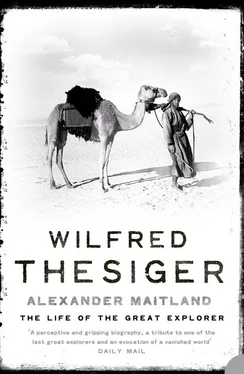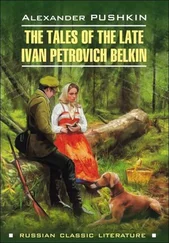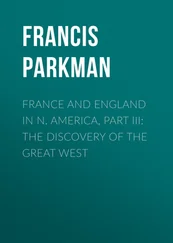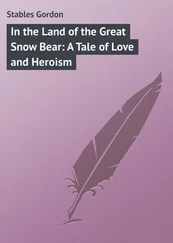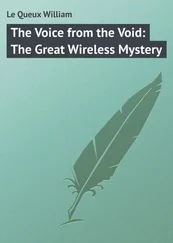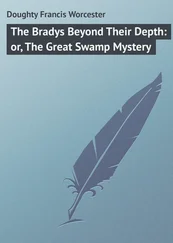We can only guess what John Andrew might have looked like. It is tempting to picture him as above average height, thin and wiry, with lantern jaws and a prominent nose. These characteristics recurred in later generations of Thesigers: for example General Lord Chelmsford, the actor Ernest Thesiger, and Ernest’s first cousin Wilfred, whose large, skewed, three-times-broken nose became his most famous physical hallmark. But the assumption that John Andrew’s looks and build were inherited by his descendants may be quite wrong. His eldest son, Frederic, who appears life-size on one of the four cast-bronze memorial panels at the base of Nelson’s Column in Trafalgar Square, bears no obvious resemblance to other male Thesigers descended from his younger brother’s family. Neither Frederic’s looks nor build matches the gaunt, hawkish Thesiger model. He has a rounded face, a thin, expressionless mouth and an inconspicuous straight nose. He is neither stout nor very lean. It is difficult to judge his height, which seems about the same as Nelson’s; but the sculptor, J. Ternouth, may have exaggerated Nelson’s height to achieve a more dramatic effect.
Before he enlisted in the Royal Navy, Frederic served with the East India Company’s fleet in the Caribbean. He rose to Acting Lieutenant aboard HMS Formidable , commanded by Admiral Rodney, at the Battle of Saintes, off Martinique, in 1782. Praised by Rodney as ‘an excellent and gallant officer’, he later served with the Russian navy during the war between Russia and Sweden. The Empress Catherine II (Catherine the Great) awarded him an Order of Merit and, in 1790, a knighthood of the Order of St George. He became adviser to the First Sea Lord and was promoted commander, then captain. In 1801 Frederic served as ADC to Lord Nelson at the Battle of Copenhagen, when his knowledge of Danish enabled him to translate Nelson’s letter, accompanying a flag of truce, which Frederic presented to the young Crown Prince of Denmark. The bronze relief in Trafalgar Square shows him handing Nelson the Danes’ letter of surrender. Whilst the Royal Navy had profited from Frederic’s experience in the Baltic, no further offer of an active command was forthcoming. There appear to have been no obvious reasons for this. Depressed, disillusioned, without prospects or a wife and family of his own to console and distract him, Captain Sir Frederic Thesiger committed suicide at Plymouth on 26 August 1805, two months before Nelson was fatally wounded at the Battle of Trafalgar.
Sir Frederic’s younger brother Charles and his London-born wife, Mary Anne Williams, had six children, including two boys who died in infancy. Frederic, the third son – the late Sir Frederic’s nephew and namesake – witnessed, as a thirteen-year-old midshipman, the seizure of the Danish fleet at Copenhagen in 1807. He resigned from the navy, having become heir to his father’s estates in the West Indies, and afterwards studied law. He was called to the Bar in 1818 and recommended to King’s Counsel in 1834. In 1844 he was appointed Solicitor-General and was knighted. As a Member of Parliament he represented Woodstock, Abingdon and Stamford. Having twice served as Attorney-General, on 1 March 1858 Sir Frederic Thesiger QC was created the first Baron Chelmsford of Essex.
Sir Frederic’s noted attributes – ‘a fine presence and handsome features, a beautiful voice, a pleasant if too frequent wit, an imperturbable temper, and a gift of natural eloquence’ – must have stood him in good stead as a barrister and a politician. In any case, the Thesigers’ progress in less than three generations, from the arrival in England of their gifted German ancestor to achieving an English peerage, had been by any standards remarkable, and amply justified the optimism and ambition implicit in their family motto, Spes et Fortuna , ‘Hope and Fortune’.
Lord Chelmsford’s son and heir, the Honourable Frederic Augustus Thesiger, was born on 31 May 1827. After serving in Nova Scotia, the Crimea, India and Abyssinia, as General Lord Chelmsford he commanded the British force during the Kaffir and Zulu wars. In South Africa he earned a lasting notoriety when over 1300 of his troops were massacred by the Zulu army at Isandhlwana on 22 January 1879, known afterwards to the Zulus as ‘the Day of the Dead Moon’. Thesiger wrote in The Life of My Choice : ‘In the Milebrook [the house in Radnorshire, now Powys, where he and his brothers lived from 1921 with their widowed mother] were assegais and other trophies brought back by my grandfather after he had shattered the Zulu army at Ulundi in 1879 – but I never begrudged those peerless warriors their earlier, annihilating victory over a British force on the slopes of Isandhlwana.’ 10Despite having ‘shattered the Zulu army’ 11and won the war, Chelmsford was blamed for misleading intelligence and confused orders which had led to the massacre. He consequently returned to England with his reputation permanently tarnished. Thesiger wrote in 1940: ‘I have just finished the book about my grandfather and the Zulu war. [This was Lord Chelmsford and the Zulu War (1939) by Major the Hon. Gerald French DSO, which Percy Thesiger, Wilfred’s uncle, had given him in November 1939.] I found it most interesting. It seemed to be a very complete justification of his strategy in that war and a vindication of his generalship…I had not realised that the criticism had been so personal and so venomous. What does emerge very clearly is that he was a great gentleman, and that he won the respect and affection of those who served under him. He must have been a great and charming man and I wish I had known him.’ 12
Fascinated all his life by his grandfather’s controversial role in the Zulu war, Thesiger, at the age of eighty-six, visited Isandhlwana and saw for himself where the massacre had taken place. In South Africa he met the Zulu leader Chief Mangosuthu Buthelezi, who presented him with a Zulu knobkerrie, a shield and a spear. Thesiger said afterwards: ‘I found Buthelezi impressive. It moved me to have met him like that more than a century after Isandhlwana. There we were: Buthelezi, the grandson of Cetewayo, the Zulu king; and myself, the grandson of Lord Chelmsford, whose army Cetewayo’s warriors half-destroyed, and who finally destroyed them at Ulundi.’ 13
On 9 April 1905, while he was playing billiards in the United Services Club, Lord Chelmsford died of a heart attack at the age of seventy-seven. Thesiger said: ‘My grandfather and my father died instantaneously, so that they could have felt nothing. When it’s my turn to push up the daisies, that is how I should wish to die.’ 14
Wilfred Thesiger’s father, Wilfred Gilbert, was the third of Lord and Lady Chelmsford’s five sons. He was born at Simla on 25 March 1871, four years after Frederic Augustus Thesiger married Adria Fanny Heath, the eldest daughter of Major-General Heath of the Bombay Army. Their eldest son, Frederic John Napier, was appointed Viceroy of India from 1916 to 1921; in 1921 he was created the first Viscount Chelmsford. Harold Lumsden Thesiger, their fourth son, died in India, aged only two and a half months, in 1872.
‘For some reason,’ Thesiger wrote, ‘my father was educated at Cheltenham [College], whereas his brothers [Frederic, Percy and Eric] were educated at Winchester.’ 15Wilfred Gilbert had twice failed the Winchester entrance examination, despite receiving extra tuition at a crammer in Switzerland. As a boy he had been delicate. Above average height, he was handsome and slender, and his expression was wistful, perhaps melancholy. In 1889 and 1892 he was examined at Francis Galton’s Anthropometric Institute in South Kensington, which was equipped and supervised as part of the International Health Exhibition. Galton’s laboratory measured ‘Keenness of Sight and of Hearing; Colour Sense, Judgement of Eye; Breathing Power; Reaction Time; Strength of Pull and of Squeeze; Force of Blow; Span of Arms; Height, both standing and sitting; and Weight’. 16A student of ‘hereditary talent and character’, and founder of the Eugenics Society, Galton espoused the theory of ‘right breeding’, which the high achievers produced by successive generations of Thesigers appeared to confirm.
Читать дальше
